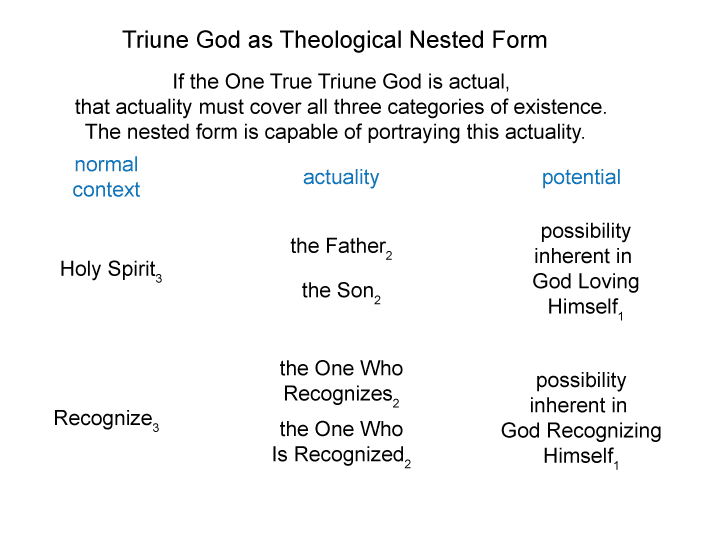Man and Sin by Piet Schoonenberg (1964) 2.1BB
[So, I wonder, what normal context could bring I (the one who recognizes) and myself (the one who is recognized) out of the realm of possibility?
I must admit that “it was never inevitable that I exist”.
So either, “‘God3‘ brought ‘I and myself2‘ into relation with ‘His pure potential1‘.” or “It was pure luck” or “It was destiny” or whatever …
The former option is the apparently discredited concept of design. The latter options are completely crazy.
So, which do I choose, discredited sanity or creditable craziness?]

